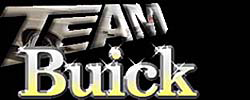The play I was talking about would be in the in and out direction, exactly as you describe. What we are trying to find out here is exactly where that play is, and it can be in two different places.
1. The shaft can be moving in and out of the axle housing. That's the bearing we were talking about earlier.
2. The entire axle housing can be moving sideways relative to the rest of the car. That's the control arm bushings. I am also going to add the panhard bar bushings to this group if the car has a panhard bar. To be honest, I can't remember if these cars have one, and I can't find a picture of the Special/F85 rear suspension to look at.
I respect your statement that your mechanical skills may be limited. However, it is very easy to tell the where the play is, as long as you are willing to take the rear wheels off the car. This is no different from what you do when you change a rear tire.
Once the wheel is off, release the parking brake, take hold of the brake drum, and see if it is loose on the shaft. If it is loose, take it off too, which will expose the flange on the end of the axle shaft. If it is tight, just leave it where it is. In case it isn't obvious, absolutely do not step on the brake pedal once you have the drum off.
Now grab either the drum if it is still on, or else the flange, and try to move it in and out. You are looking for relative motion between the drum or flange and the backing plate, which is stationary because it is bolted to the axle housing. If you see any relative movement, the bearing is bad. If everything moves together, and you still get the clunking noise, your problem is the bushings. You will need to do this test on both sides, just in case the bearing on the other side is bad.
I understand what you are saying about the wheels looking out of plumb, but I think that this is because of the side slope. The car weight shifts to the downhill side and causes the car body to sit at an angle relative to the axle housing. Also, the tire sidewalls bend sideways, which might cause the same apparent effect. If you see this on level ground, that's when you should start worrying about it.
Ray






Bookmarks